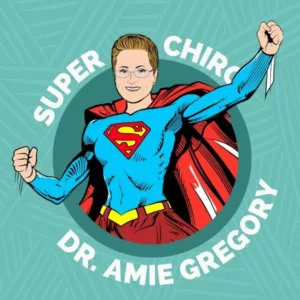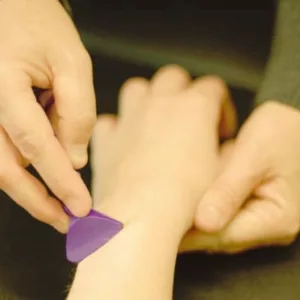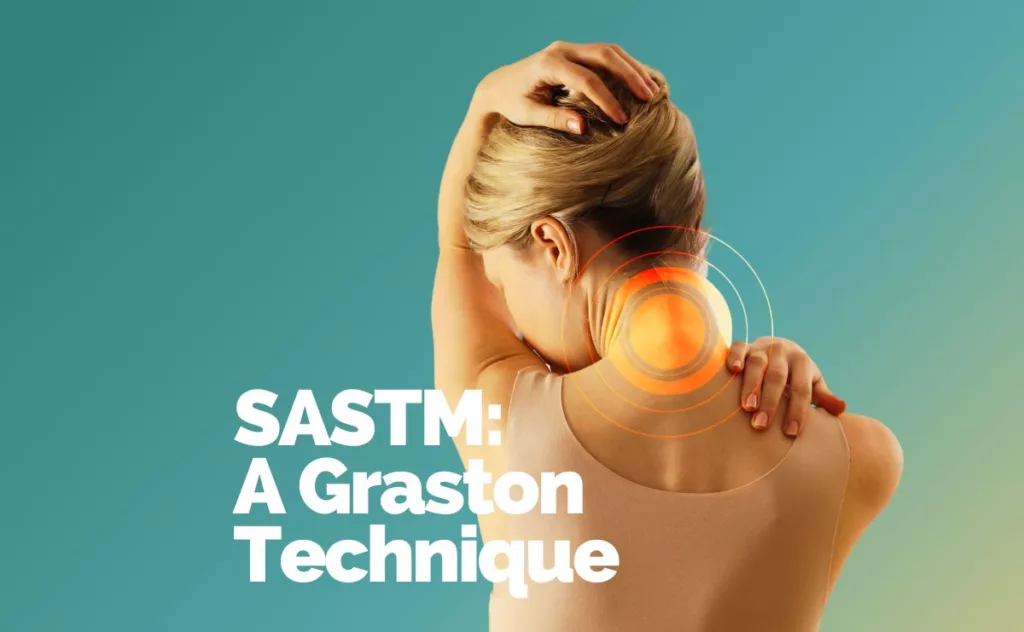So, you’re dealing with nagging aches and pains, and someone mentions the “Graston Technique.” If you’re scratching your head in confusion, don’t worry. It’s not the latest dance craze or an obscure culinary term—it’s a fantastic chiropractic method that could be the game-changer you’ve been searching for! Welcome to the exciting world of chiropractic solutions, where we redefine the meaning of “feeling good.”

A Graston Technique, specifically SASTM, employed by practitioners like the experienced Dr. Aime Gregory at Rincon Chiropractic, has been providing pain relief and restoring function to many for decades. This chiropractic care method targets your soft tissue, offering relief from a variety of conditions, while promoting optimal health. But enough of the chit-chat—let’s dig into the nitty-gritty of the Graston Technique.
Unveiling the SASTM, The Graston Technique
So, what exactly is the SASTM? Think of it as a deep tissue massage on steroids. It involves the use specially designed ergonomic instruments to detect and treat areas exhibiting soft tissue fibrosis or chronic inflammation. Pretty cool, huh?
Instead of relying solely on their sense of touch, practitioners like Dr. Gregory utilize these tools to locate restrictions and to break up the scar tissue, leading to better movement and less pain. It’s like having an extra set of hands that are really good at finding where the pain originates.
The instruments come in different shapes and sizes, and no, they are not as scary as they sound. Each instrument is designed to fit a particular body contour and to address specific issues. Some might look like a duck’s foot, others might resemble a butter knife, but don’t let that fool you. They’re meant to amplify abnormalities in the tissue and help your chiropractor correct them. The goal? Less pain and better function.
The Origin Story: The History of SASTM & Graston
The Graston Technique and SASTM may sound futuristic, but it’s rooted in ancient practices. The technique was developed by David Graston, an athlete looking for a way to treat his own debilitating knee injury. After traditional therapy failed, he started experimenting with the cross-friction massage and old-school manual tools. And voila, the Graston Technique was born. SASTM is a continuation of his work, using new materials and new techniques to improve patient wellness.
Since its inception in the early 1990s, the Graston Technique has gained traction in the chiropractic community, helping countless patients regain mobility and lead more comfortable lives. Dr. Gregory at Rincon Chiropractic has been wielding these instruments for over 14 years, sculpting a legacy of pain relief and improved function. She has harnessed the power of these simple SASTM tools to make a big impact on her patients’ lives.

Like any good superhero origin story, the Graston Technique and SASTM emerged from a place of need and blossomed into a trusted ally in the fight against chronic pain. Armed with knowledge, skill, and a set of SASTM tools, Dr. Gregory continues to write her chapter in this tale, helping each patient turn the page towards a more pain-free life.
Conditions Relieved By SASTM, (A Graston Technique)
Not all superheroes wear capes—sometimes, they come in the form of simple, purple SASTM instruments. The SASTM Technique has a track record of alleviating various conditions, including:
- Tendonitis: This condition involves inflammation of a tendon, leading to pain and restricted movement. SASTM can help by breaking down the scar tissue, reducing inflammation, and facilitating the healing process.
- Plantar Fasciitis: You would recognize this condition by pain in the heel due to inflammation of the thick band of tissue (plantar fascia) running across the bottom of your foot. SASTM aids by releasing tightness, decreasing inflammation, and promoting the restoration of normal tissue structure.
- Carpal Tunnel Syndrome: This nerve disorder causes pain, tingling, and numbness in your hand and arm. We often use the SASTM and the Graston Technique for this to alleviate the pressure on the median nerve, offering relief from these symptoms.
- Fibromyalgia: This condition is marked by widespread musculoskeletal pain, fatigue, and tenderness. SASTM can offer relief by reducing muscle tension and improving circulation to the affected areas.
- Chronic Pain: Chronic pain can stem from various sources, including past injuries, degenerative diseases, or unknown causes. SASTM aids in managing chronic pain by reducing soft tissue restrictions, thus leading to enhanced movement and less discomfort.
This is only a short list of the conditions that benefit from this technique. We have included a more complete list at the bottom of this article**.
SASTM (A Graston Technique) at Rincon Chiropractic
Imagine walking into Rincon Chiropractic, the scent of calming essential oils in the air, and the ambiance fostering a sense of relief. This is where your SASTM journey begins.
A typical session commences with a thorough evaluation, with Dr. Gregory paying close attention to your medical history and current symptoms. She then uses her trained hands and the SASTM, Graston instruments to identify areas of restriction.

Following this, the real magic happens. Dr. Gregory employs the SASTM instruments, carefully manipulating them over your body, focusing on areas of discomfort. It’s an intense dance of pressure and relief as the instruments glide over your skin, targeting areas of tightness and tenderness.
At Rincon Chiropractic, the Graston Technique, SASTM isn’t a standalone treatment. It’s part of a larger symphony that could include additional chiropractic adjustments, strengthening exercises, and stretching. Dr. Gregory’s approach embodies the holistic spirit of Rincon Chiropractic. The Graston Technique serving as one of many tools at her disposal.
Understanding Contraindications: When Is SASTM Not Suitable?
Like every superhero, SASTM and The Graston Technique does have its kryptonite. There are certain situations where it may not be suitable. For instance, individuals with conditions that contraindicate intense soft tissue work—such as certain types of cancer, advanced diabetes, or anticoagulant therapy—may need to avoid or modify this treatment. It’s also not typically recommended over open wounds or for those with a hypersensitivity to touch.
Dr. Gregory at Rincon Chiropractic will carry out a comprehensive evaluation to ensure that SASTM is safe and suitable for you. After all, patient safety is always a top priority in the superhero world of chiropractic care!
Patient Journey at Rincon Chiropractic: From Consultation to Treatment
Your journey to relief and recovery begins the moment you walk through the doors at Rincon Chiropractic. First, the initial consultation is a key step in this journey, acting as the foundation for your personalized treatment plan.
During the initial consultation, you will have an in-depth discussion with Dr. Gregory about your medical history and current symptoms. This is your chance to ask questions, voice concerns, and express your treatment goals. Dr. Gregory will also perform a comprehensive physical examination to assess your condition.

If the SASTM seems like a suitable option, Dr. Gregory will explain the process in detail. She will assess your suitability based on your specific condition, your overall health, and any potential contraindications. Your comfort and understanding are paramount at Rincon Chiropractic, ensuring you feel confident and informed about your treatment plan.
From there, your treatment journey begins. Armed with the Graston Technique, SASTM, and a holistic approach to chiropractic care, Dr. Gregory will work towards alleviating your discomfort, enhancing your mobility, and improving your quality of life.
Conclusion: SASTM is part of your Health Journey at Rincon Chiropractic
SASTM at Rincon Chiropractic represents more than a method of treatment; it represents hope and potential for a life with less pain and improved mobility. Whether you’re facing conditions like tendonitis, plantar fasciitis, or chronic pain, this innovative technique could play a crucial role in your recovery.
Dr. Gregory, with her 14 years of experience with the SASTM, provides an expert hand, guiding you through the process and supporting your health journey every step of the way.
Why not take that first step? Reach out to Rincon Chiropractic today and find out how SASTM (A Graston Technique) could help redefine your health journey. Let’s conquer your pain and discomfort together, one adjustment at a time.
** A Thorough List of Conditions That Benefit From SASTM
Achilles Tendinitis (Heel Pain)
Inflammation of the Achilles tendon, causing pain and stiffness at the back of the heel.
Ankle Strains/Sprains (Medial/Lateral)
Injuries to the ligaments of the ankle, causing pain, swelling, and difficulty walking.
Bicep Tendinitis
Inflammation of the tendon that connects the biceps muscle to the bones in the shoulder, causing pain in the upper arm.
Carpal Tunnel Syndrome
A condition characterized by numbness, tingling, or weakness in the hand due to pressure on the median nerve in the wrist.
DeQuervain’s Syndrome
A painful condition affecting the tendons on the thumb side of the wrist.
Frozen Shoulder
Stiffness, pain, and limited range of movement in the shoulder due to inflammation or scarring.
Golfers Elbow (Medial Epicondylitis)
Inflammation of the tendons that attach your forearm muscles to the inside of the bone at your elbow, causing pain and tenderness.
Groin Pulls
Strain or tear to the muscles of the inner thigh or front of the hip, causing pain and tenderness.
Hammer Toe
A deformity that causes a toe to bend downward at the middle joint, often due to imbalance in the muscles, tendons, or ligaments.
Hamstring Injuries
Strains or tears in the muscles at the back of the thigh, causing pain and limited mobility.
Hip Replacements
Surgical procedure where a damaged hip joint is replaced with an artificial one.
Knee Replacements
Surgical procedure where a damaged knee joint is replaced with an artificial one.
Knee Sprains
Injuries to the ligaments that support the knee, causing pain, swelling, and instability.
Low Back Pain
Pain in the lower back region, commonly due to poor posture, lifting heavy objects, or aging.
Morton’s Neuroma
A painful condition that affects the ball of your foot, often feeling like you’re standing on a pebble in your shoe.
Musculoskeletal Imbalances
An imbalance or misalignment in the musculoskeletal system, often leading to pain or injury.
Neck Pain
Discomfort in the neck area due to factors like poor posture, stress, or injury.
Patellar Tendinitis (Anterior Knee Pain)
Inflammation of the tendon connecting the kneecap to the shinbone, causing pain at the front of the knee.
Posterior Tibialis Tendinitis
Inflammation or tear of the tendon that supports the arch of the foot, causing pain and swelling on the inner side of the ankle.
Quadricep Injuries (Thigh)
Damage to the large muscle at the front of the thigh, resulting in pain, swelling, and reduced mobility.
Rotator Cuff Tendinitis
Irritation or inflammation of the tendons and muscles that help stabilize the shoulder, resulting in pain with arm movement.
Scars (Surgical/Traumatic)
Marks left on the skin after a wound, surgery, or injury has healed.
Shin Splints
Pain along the shinbone (tibia) due to overuse or stress, common in runners and dancers.
Tarsal Tunnel Syndrome
A condition caused by compression of the tibial nerve within the tarsal tunnel of the foot, leading to pain, numbness, and tingling.
Tennis Elbow (Lateral Epicondylitis)
Inflammation of the tendons that connect the forearm muscles to the outside of the elbow, resulting in pain and tenderness.
Thoracic Pain (Mid Back)
Discomfort or pain in the middle back or thoracic region, often due to poor posture, muscle strain, or spinal conditions.
Trigger Finger
A condition where a finger or thumb gets stuck in a bent position due to inflammation of the tendons.
Turf Toe
A sprain of the big toe joint resulting from injury during sports activities, causing pain, swelling, and limited joint movement.


